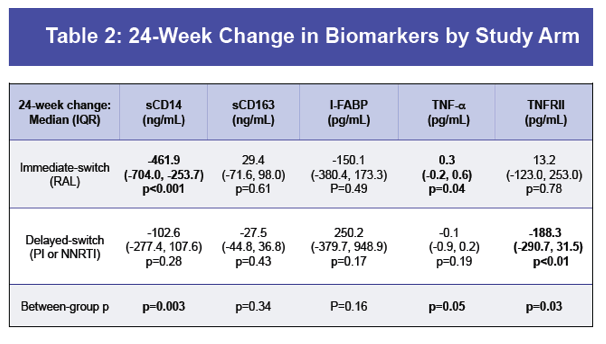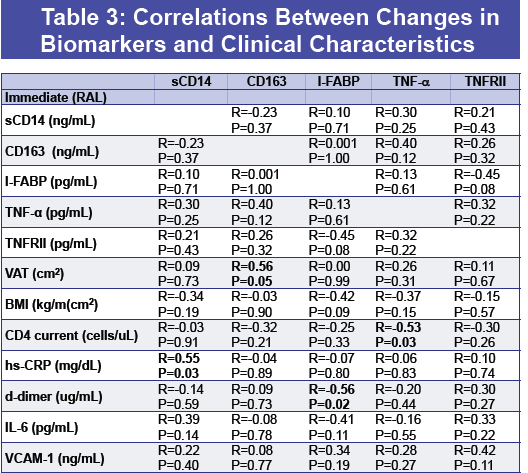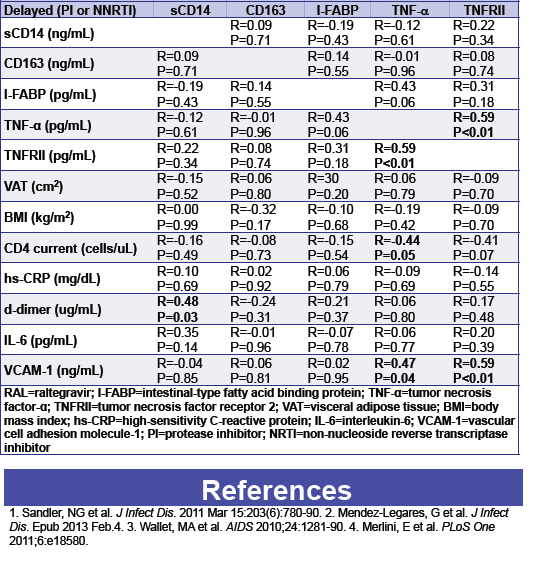 |
 |
 |
| |
Soluble CD14 Declines in Virologically Suppressed Women Switching from PI or NNRTI to Raltegravir: The Women, Integrase, and Fat Accumulation Trial
|
| |
| |
Reported by Jules Levin
CROI 2013
JE Lake1, G McComsey2, T Hulgan3, C Wanke4, A Mangili4, S Walmsley5, MS Boger6, SA Stramotas1, JS Currier1
1University of California, Los Angeles, CA, USA; 2Case Western Reserve University, Cleveland, OH, USA; 3Vanderbilt University, Nashville, TN, USA;
4Tufts University, Boston, MA, USA; 5University of Toronto, Toronto, ONT, Canada; 6Medical University of South Carolina, Charleston, SC, USA
from Jules: on of the key stories coming out of CROI is that there were several studies reporting monocyte activation markers were found to be associated with heart disease, this study reports raltegravir improves sCD14, a monocyte activation marker. Very recently there was a published paper in the journal AIDS, finding raltegravir is active in the gut, perhaps having an affect on microbial translocation & activation which in turn could mean an affect on inflammation & comorbidities:
Differential Penetration of Raltegravir throughout Gastrointestinal Tissue: Implications for Eradication and Cure - (02/15/13)
"Conclusions: RAL rapidly disseminates into GI tissue and concentrations remain significantly higher than BP. RAL exposure in GI tissue remains higher than any ARV investigated to date. These data suggest that RAL should result in full suppression of viral replication in GI tissue and GALT......Gut-associated lymphoid tissue (GALT) is the largest aggregate of lymphoid tissue within the body. GALT contains a high concentration of activated CD4. T cells susceptible to HIV infection, the majority of which die quickly as a result of viral cytopathic effects or host responses"
......."Our study is the first, to our knowledge, to investigate the role of microbial translocation with NHL risk. The association of elevated sCD14 and LPS with increased NHL risk supports an etiologic role for gut microbial translocation in lymphomagenesis among HIV-infected individuals. Additional studies are needed to replicate our findings and further evaluate the potential role of microbial translocation in lymphomagenesis among HIV-infected populations."











|
| |
|
 |
 |
|
|